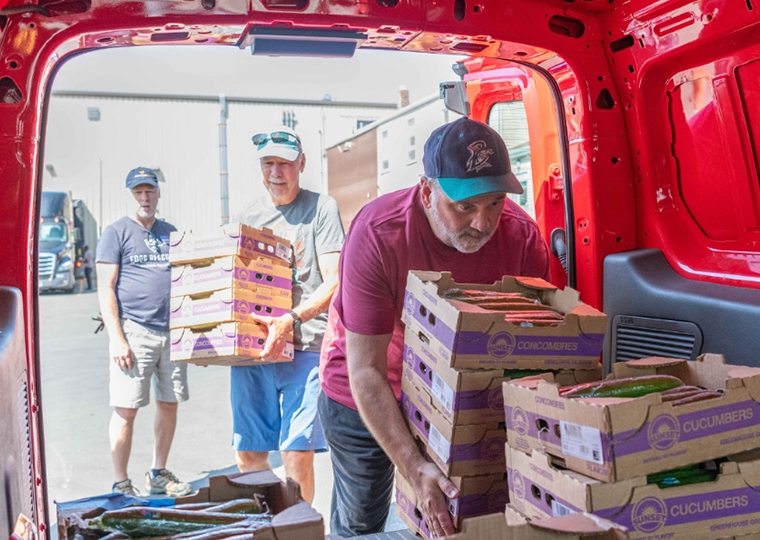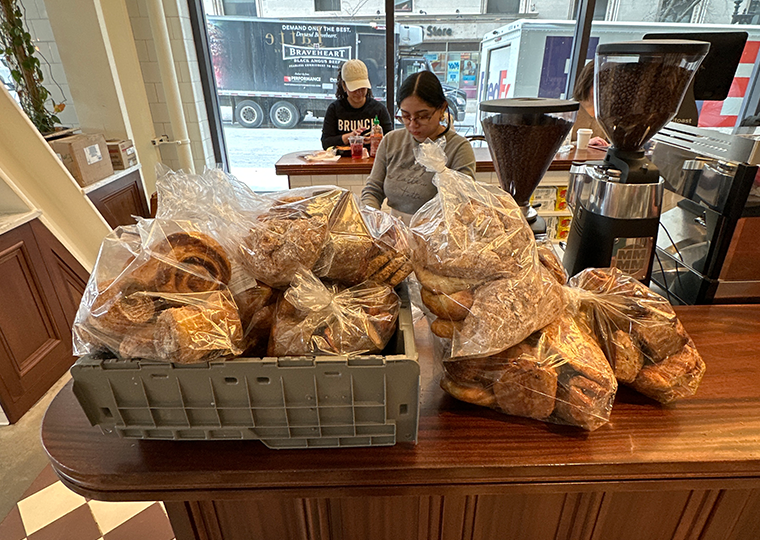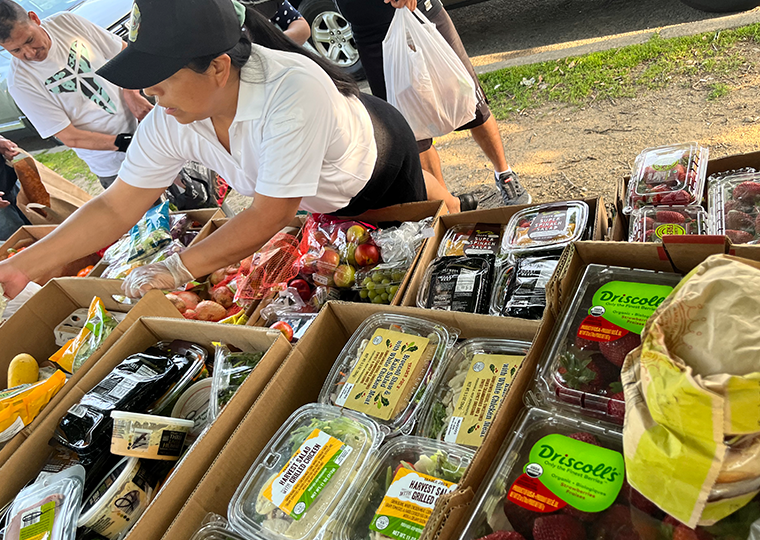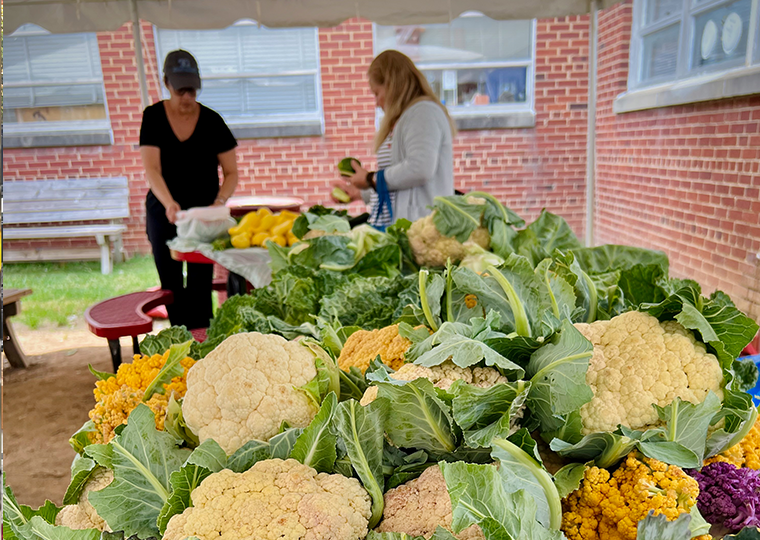When to allow unpaid workers to call dibs on recurring tasks — and when not to
Volunteers in the U.S. provide an estimated 8 billion hours of free labor annually. But roughly 1 in 3 volunteers becomes disengaged within a year — burnt out by overuse or disillusioned when tasks aren’t to their liking — and their departure represents about $70 billion of lost economic value. This makes managing volunteers and keeping them committed a crucial task for any nonprofit or charity.
Food Rescue U.S., a nonprofit working with academia to develop data-driven strategies to improve the management of their volunteer workforce, operates an online matching platform overseeing more than 40 locations where volunteers are crowdsourced to “rescue” leftover food that is donated by grocery stores, restaurants and other businesses. The volunteers pick up the donations and transport them to agencies providing meals for those in need. But efficiently matching sources of food and willing drivers in a way that keeps both groups committed to the endeavor is no easy job.

Two papers use data from FRUS to explore how to improve volunteer engagement, but the findings can extend to any organization relying on a volunteer corps. The data includes nearly two years of schedules for food pickups during 2017 and 2018. This includes over 35,000 donations from all over the U.S. and 1,652 unique volunteers matching on the task of transporting the donations.
To Commit or Not To Commit
The first study comes in the form of a paper, forthcoming in Manufacturing and Service Operations Management, by Stanford’s Irene Lo, Yale’s Vahideh Manshadi, UCLA Anderson’s Scott Rodilitz and Meta’s Ali Shameli. It explores a trade-off between reliability and flexibility created when volunteers are able to adopt, or call dibs on, recurring tasks on a matching platform. A poor balance between the two can have negative consequences for a nonprofit’s growth.
An example of a recurring task, in the case of FRUS, is a food donation by a restaurant that needs to be transported each Wednesday. About 92% of the donations in the data for FRUS are repeated the following week. Allowing volunteers to adopt recurring donations helps ensure donors will see their perishable food consistently picked up and this increases the likelihood that the donor will continue to participate in the program. Two-thirds of the matches in the data were adopted matches.

However, when volunteers commit to a regularly scheduled task, they are less likely to look at the new tasks arriving on the platform and this can potentially impede the platform’s ability to take on new food donors — and thus limit its growth. Imagine a large new donor of food ignored by volunteers picking up from relatively smaller locations.
What’s more, growth on the volunteer side of the platform can be negatively impacted when existing tasks are locked up by volunteers who have adopted them, limiting opportunities available to new volunteers. This jeopardizes the platform’s ability to attract and retain new volunteers and to scale.
The researchers analyze the historical data from FRUS to determine the appropriate level of adoption of tasks that a platform should allow in order to drive the most matches between volunteers and donors. But rather than finding some magic ratio, the researchers find that a platform’s best policy on adoption should be all or nothing (at least, as long as tasks are similarly popular). Which side of that coin to choose depends on the robustness of a region’s supply of volunteers and tasks.
When there are plenty of tasks available and lots of volunteers looking to accept them, then adoption should not be allowed, the researchers contend. This is because the certainty of task completions created by adoption becomes less important when the matching process is already efficient. But when there are not many volunteers and tasks, then adoption should always be allowed, to provide stability. If some tasks are more “in demand’’ than others, then it can be best to allow adoption only for the less popular tasks, while using the availability of popular tasks to help grow the platform.

Activate, Don’t Agitate
The data from FRUS shows that 22% of tasks remain unclaimed on the final day that claims can be made on the platform. To fulfill these unclaimed tasks, FRUS looks to give volunteers a nudge and worked with researchers again to improve its policy for notifying volunteers about time-sensitive tasks.
A paper published in Management Science by Yale’s Manshadi and UCLA Anderson’s Rodilitz details what these researchers have named the “online volunteer notification problem.” The core of the problem is to maximize task completion without overloading volunteers with notifications.
This is especially important because once a volunteer is notified of a task, experience suggests he or she tunes our further notifications for a period of time. Therefore, FRUS can’t simply send out blanket notifications. Excessive notifications would quickly lead to volunteer fatigue and nobody would be left to respond to future notifications.

Before Manshadi and Rodilitz explored the problem, FRUS relied on site directors to make manual and ad hoc — as opposed to data-driven — decisions about which volunteers to notify. This was a time-consuming task, and it was difficult to plan around future needs.
By analyzing the FRUS data, the researchers found that FRUS volunteers had consistent preferences for the types of tasks they accepted. Manshadi and Rodilitz used this fact to design a policy and algorithm for notifying volunteers. Their algorithm first predicts which volunteers are most likely to accept a specific task. It also adds a layer of complexity that considers how the volunteer’s future availability will be affected if notified and allows the algorithm the choice of saving a volunteer for a future task instead. The algorithm then sends out notifications to a subset of the highest ranked volunteers for the task.
Their algorithm was tested in simulations using the historical data from FRUS and, when compared with a benchmark that approximates the current practice at FRUS, it consistently and clearly outperformed the benchmark.
In both papers, the researchers believe their results can be applied to the broader field of volunteer management and crowdsourcing operations.
Featured Faculty
-
Scott Rodilitz
Assistant Professor of Decisions, Operations and Technology Management
About the Research
Lo, I., Manshadi, V., Rodilitz, S., & Shameli, A. (2024). Commitment on volunteer crowdsourcing platforms: Implications for growth and engagement. Manufacturing & Service Operations Management.
Manshadi, V., & Rodilitz, S. (2020, July). Online policies for efficient volunteer crowdsourcing. In Proceedings of the 21st ACM Conference on Economics and Computation (pp. 315-316).






